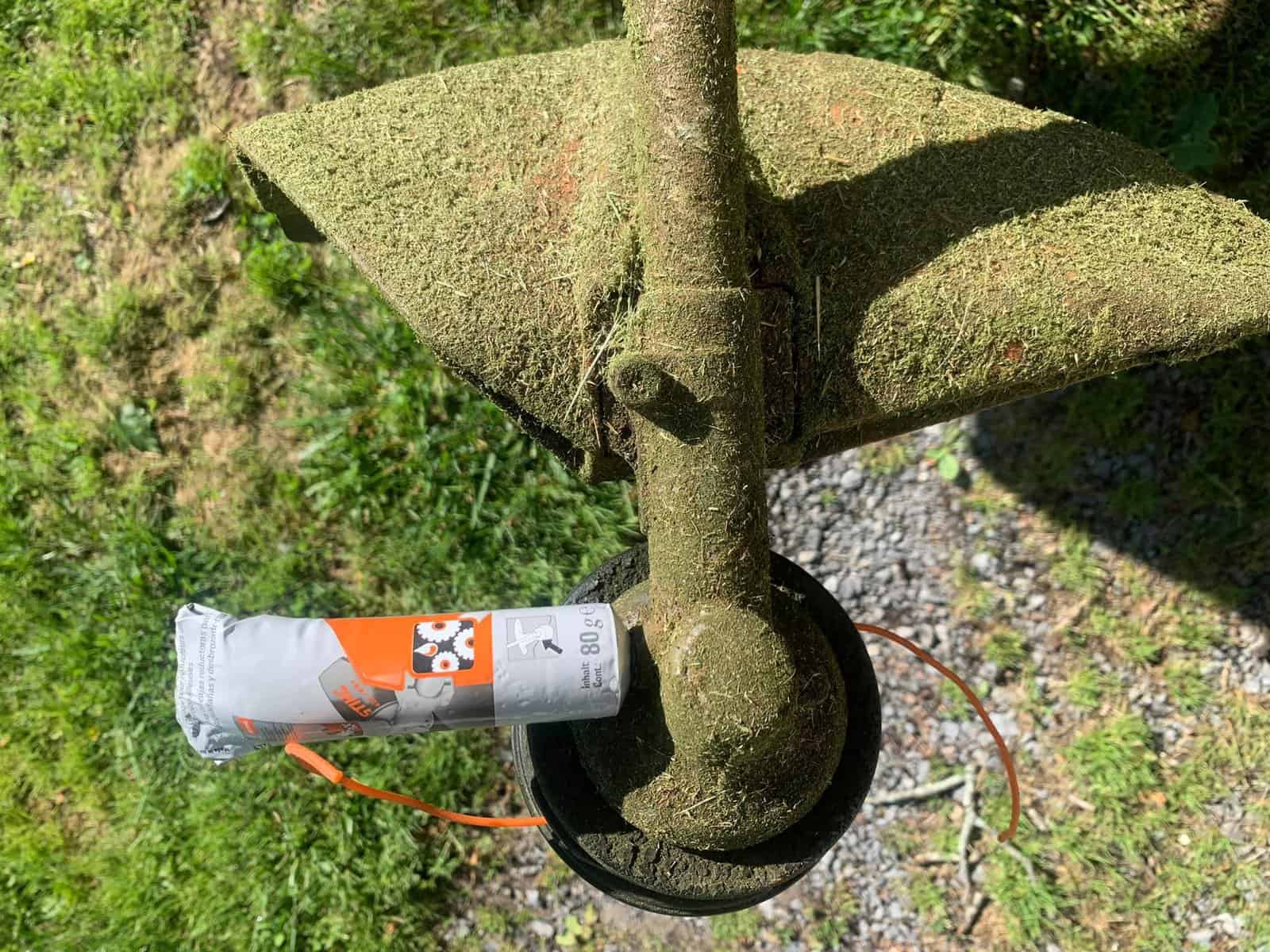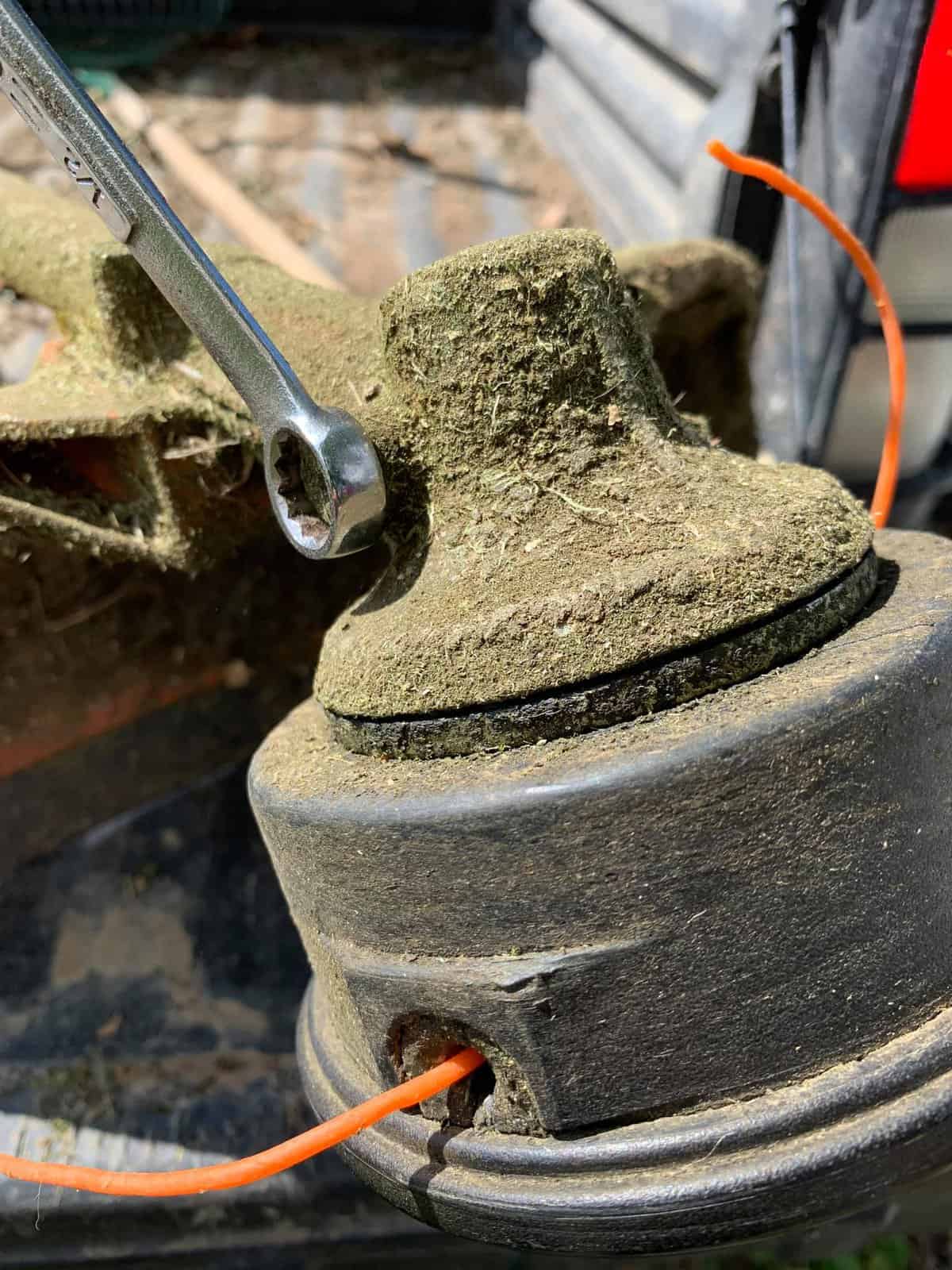Good day!
Ever wondered what grease to use for your string trimmer? I’ve been there, juggling through numerous options and getting confused. After extensive research on leading brands like STIHL and Makita, I’ve uncovered the best choices among gear greases that’ll help reinforce the performance of your trimmer.
Let’s dive in, uncover those top-notch greases and keep our lawns pristine!
Contents
What Grease For String Trimmer?
When it comes to choosing grease for your string trimmer, there are several options available such as Stihl gearbox grease, synthetic multi-purpose grease, string trimmer gear grease SG2, Makita string trimmer gear grease N00, and other suitable greases.
Stihl gearbox grease
Stihl gearbox grease is what you need for Stihl tools. It’s made just for Stihl brushcutters and clearing saws. This grease helps your trimmer last longer by reducing wear. It also keeps rust away from your tool.
You can buy it straight from Stihl. There are other good greases too, but this one is the best match if you have a gas trimmer made by Stihl.
Synthetic multi-purpose grease
Synthetic multi-purpose grease is a great choice for your string trimmer. It helps cut down the wear and tear on moving parts. This type of grease is much like the one used in the shaft and gearbox of your trimmer.
The fact that it’s synthetic means it works well under tough conditions.
One brand I use often is STIHL multi-purpose grease. It’s made just for gear systems in tools like hedge trimmers and electric saws. But, if you can’t find this kind, Lowe’s sells silicone lubricant spray as another option instead of synthetic multi-purpose grease.
String trimmer gear grease SG2
I use string trimmer gear grease SG2 on my Makita string trimmer. It’s a special kind of grease. It is thick, like peanut butter, and it sticks well to the gears. It keeps the machine running smoothly even when it gets hot or wet outside.
You can find this grease in a small 2.8 oz size tube at most stores that sell tools and garden equipment. Since I’ve been using this grease, my trimmer works better and lasts longer too!
Makita string trimmer gear grease N00
The Makita string trimmer gear grease N00 is specially made for string trimmers and brush cutters. It comes in a convenient 2.8 oz tube, making it easy to apply. This gear grease is designed to handle tough conditions and demanding tasks.
By lubricating the gears of your line trimmer, it ensures smooth operation and helps extend the lifespan of your equipment. The specific model number for this gear grease is N00.
Other suitable grease options
There are also other grease options that you can consider for your string trimmer. Some of these include:
- Lithium-based #2 multi-purpose grease, which is commonly used in the shaft and gearbox of a string trimmer.
- White lithium grease, which is suitable for lubricating and protecting various parts of the trimmer.
- DalaB’s “General Lubricant Grease Oil,” which is compatible with Stihl and Honda tools.
Factors to Consider When Choosing Grease for a String Trimmer
When choosing grease for a string trimmer, it is important to consider factors such as compatibility with the trimmer’s gear system, viscosity and lubrication properties, resistance to heat and water, and easy application with grease guns.
Read more: Does String Trimmers Kill Weeds?

Compatibility with the trimmer’s gear system
To ensure smooth operation and prevent damage to your string trimmer’s gear system, it is important to use grease that is compatible with the trimmer. Referencing the owners manual can be helpful in determining the recommended type of grease for your specific trimmer model.
Lithium-based multipurpose grease is commonly recommended for lubricating the trimmer’s gear system. It is also advisable to choose a grease that is compatible with the materials used in your gear system, as well as one that can withstand high temperatures and resist water.
By using the right grease, you can keep your string trimmer running smoothly and extend its lifespan.
Viscosity and lubrication properties
Choosing the right grease for your string trimmer involves considering its viscosity and lubrication properties. Viscosity refers to how thick or thin the grease is, and it affects how well it flows and sticks to surfaces.
When selecting a grease for your trimmer, you want to ensure that it has the right viscosity to provide proper lubrication. The viscosity should be based on factors like the load and speed of your trimmer, as well as the temperature conditions in which it operates.
By using a grease with suitable viscosity and good lubrication properties, you can keep your string trimmer running smoothly and extend its lifespan.
Resistance to heat and water
When choosing grease for your string trimmer, it’s important to consider its resistance to heat and water. This is because a string trimmer operates in outdoor conditions, where it can be exposed to high temperatures and moisture.
You want a grease that can withstand these elements and provide long-lasting lubrication. Look for greases that are specifically designed to resist heat and water, as they will offer better protection for your trimmer’s gear system.
Additionally, make sure the grease has good wash resistance so it doesn’t get easily washed away during use or when cleaning the trimmer. By choosing a grease with excellent resistance to heat and water, you can ensure optimal performance and durability for your string trimmer.
Easy application and compatibility with grease guns
When choosing grease for your string trimmer, it’s important to consider how easy it is to apply and whether it is compatible with grease guns. Grease guns are tools commonly used to apply grease to string trimmers.
There are two types of grease guns: pneumatic and battery-powered. Pneumatic grease guns use compressed air, while battery-powered ones offer convenience and portability. It’s crucial to select a grease gun that is compatible with the type of fittings or nipples on your trimmer.
This ensures smooth and hassle-free application, making maintenance easier for you as a lawn owner.
How to Apply Grease to a String Trimmer
To properly apply grease to a string trimmer, follow these simple steps and keep your trimmer running smoothly for years to come.
Read more: Can I Use A String Trimmer To Cut Grass?

Accessing the gear system
To access the gear system of your string trimmer, you need to locate the filler plug bolt on the side of the shaft above the trimmer head. This bolt needs to be loosened and removed so that you can easily reach the gear system.
Once you have removed the bolt, you will have a clear view of the gears and can proceed with cleaning or applying grease as needed. It’s important to follow any specific instructions provided in your owner’s manual for accessing and maintaining the gear system properly.
Cleaning the gear system
To maintain the gear system of your string trimmer, it’s important to keep it clean. Over time, dirt and debris can build up in the gears, causing them to work less efficiently. To clean the gear system, start by removing any excess grass or debris from the outside of the trimmer.
Then, carefully open up the gear housing and use a soft brush or cloth to remove any dirt or grime. Be sure to pay special attention to the gears themselves, making sure they are free from any buildup.
Once you have finished cleaning, close up the gear housing and make sure everything is securely fastened before using your trimmer again. Regular cleaning will help ensure that your string trimmer operates smoothly and lasts longer.
Applying the grease
Applying grease to your string trimmer is an important step in maintaining its performance and longevity. To do this, you will need to access the gear system of your trimmer. This can usually be done by removing a plate or cover on the head of the trimmer.
Once you have access, it’s important to clean the gear system thoroughly before applying any grease. Use a rag or brush to remove dirt, debris, and old grease from the gears. After cleaning, take your chosen grease – Stihl gearbox grease, synthetic multi-purpose grease, or another suitable option – and apply it evenly to the gears.
Be sure not to over-grease as too much can attract dirt and cause clogs. Finally, after applying the grease, test your trimmer to ensure that everything is working smoothly before using it again.
Testing the trimmer
To make sure that the grease is working properly in your string trimmer, it’s important to test it. Start by running the trimmer for a few minutes to see if there are any strange noises or vibrations coming from the gear system.
If everything sounds smooth and feels steady, then the grease is doing its job. You can also check for any signs of excess heat or excessive wear on the gears after using the trimmer.
These are indicators that you may need to reapply or change out the grease. Regular testing will help keep your trimmer running smoothly and prevent any potential maintenance issues down the line.
Conclusion
In conclusion, when choosing grease for your string trimmer, it is important to consider factors like compatibility with the trimmer’s gear system, viscosity and lubrication properties, resistance to heat and water, and easy application.
Some recommended greases include Stihl gearbox grease, synthetic multi-purpose grease, Makita string trimmer gear grease N00, and other suitable options. Always refer to the owner’s manual or consult the manufacturer for their recommended grease type for your specific trimmer brand.
FAQs
1. How often should I apply grease to my string trimmer?
It is recommended to apply grease to your string trimmer at least once a year or as specified in the owner’s manual. Regular lubrication helps prevent wear and keeps the parts moving smoothly.
2. Can I use any type of grease on my string trimmer?
No, you should not use just any type of grease on your string trimmer. It is important to use the correct type of grease that is compatible with the materials and components used in the trimmer.
3. Where do I apply grease on my string trimmer?
Apply grease to areas such as the gears, bearings, drive shaft, and cutting head pivot points. Refer to your owner’s manual for specific instructions on where to apply grease for proper maintenance.





